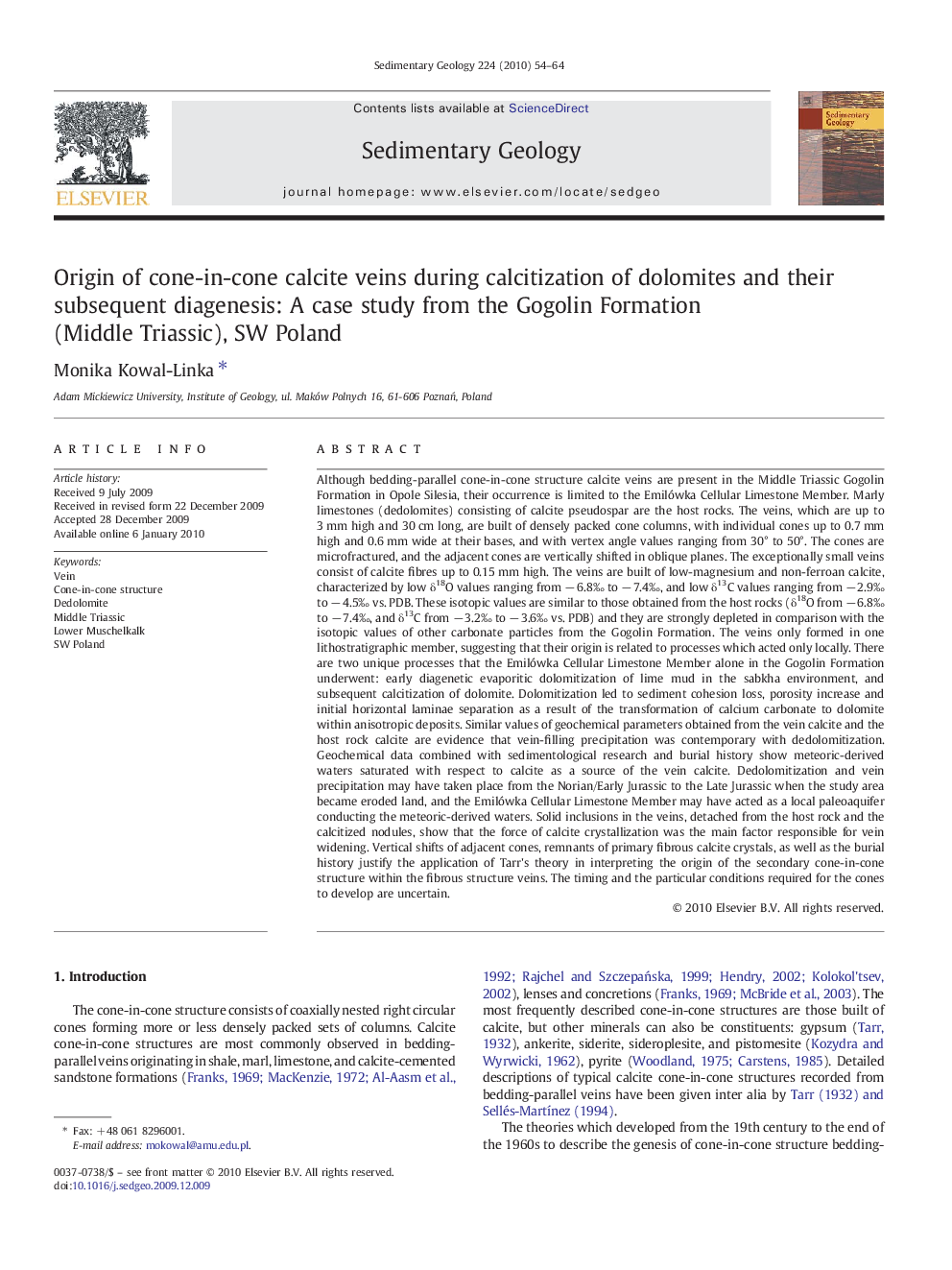| کد مقاله | کد نشریه | سال انتشار | مقاله انگلیسی | نسخه تمام متن |
|---|---|---|---|---|
| 4690227 | 1636129 | 2010 | 11 صفحه PDF | دانلود رایگان |

Although bedding-parallel cone-in-cone structure calcite veins are present in the Middle Triassic Gogolin Formation in Opole Silesia, their occurrence is limited to the Emilówka Cellular Limestone Member. Marly limestones (dedolomites) consisting of calcite pseudospar are the host rocks. The veins, which are up to 3 mm high and 30 cm long, are built of densely packed cone columns, with individual cones up to 0.7 mm high and 0.6 mm wide at their bases, and with vertex angle values ranging from 30° to 50°. The cones are microfractured, and the adjacent cones are vertically shifted in oblique planes. The exceptionally small veins consist of calcite fibres up to 0.15 mm high. The veins are built of low-magnesium and non-ferroan calcite, characterized by low δ18O values ranging from − 6.8‰ to − 7.4‰, and low δ13C values ranging from − 2.9‰ to − 4.5‰ vs. PDB. These isotopic values are similar to those obtained from the host rocks (δ18O from − 6.8‰ to − 7.4‰, and δ13C from − 3.2‰ to − 3.6‰ vs. PDB) and they are strongly depleted in comparison with the isotopic values of other carbonate particles from the Gogolin Formation. The veins only formed in one lithostratigraphic member, suggesting that their origin is related to processes which acted only locally. There are two unique processes that the Emilówka Cellular Limestone Member alone in the Gogolin Formation underwent: early diagenetic evaporitic dolomitization of lime mud in the sabkha environment, and subsequent calcitization of dolomite. Dolomitization led to sediment cohesion loss, porosity increase and initial horizontal laminae separation as a result of the transformation of calcium carbonate to dolomite within anisotropic deposits. Similar values of geochemical parameters obtained from the vein calcite and the host rock calcite are evidence that vein-filling precipitation was contemporary with dedolomitization. Geochemical data combined with sedimentological research and burial history show meteoric-derived waters saturated with respect to calcite as a source of the vein calcite. Dedolomitization and vein precipitation may have taken place from the Norian/Early Jurassic to the Late Jurassic when the study area became eroded land, and the Emilówka Cellular Limestone Member may have acted as a local paleoaquifer conducting the meteoric-derived waters. Solid inclusions in the veins, detached from the host rock and the calcitized nodules, show that the force of calcite crystallization was the main factor responsible for vein widening. Vertical shifts of adjacent cones, remnants of primary fibrous calcite crystals, as well as the burial history justify the application of Tarr's theory in interpreting the origin of the secondary cone-in-cone structure within the fibrous structure veins. The timing and the particular conditions required for the cones to develop are uncertain.
Journal: Sedimentary Geology - Volume 224, Issues 1–4, 1 March 2010, Pages 54–64